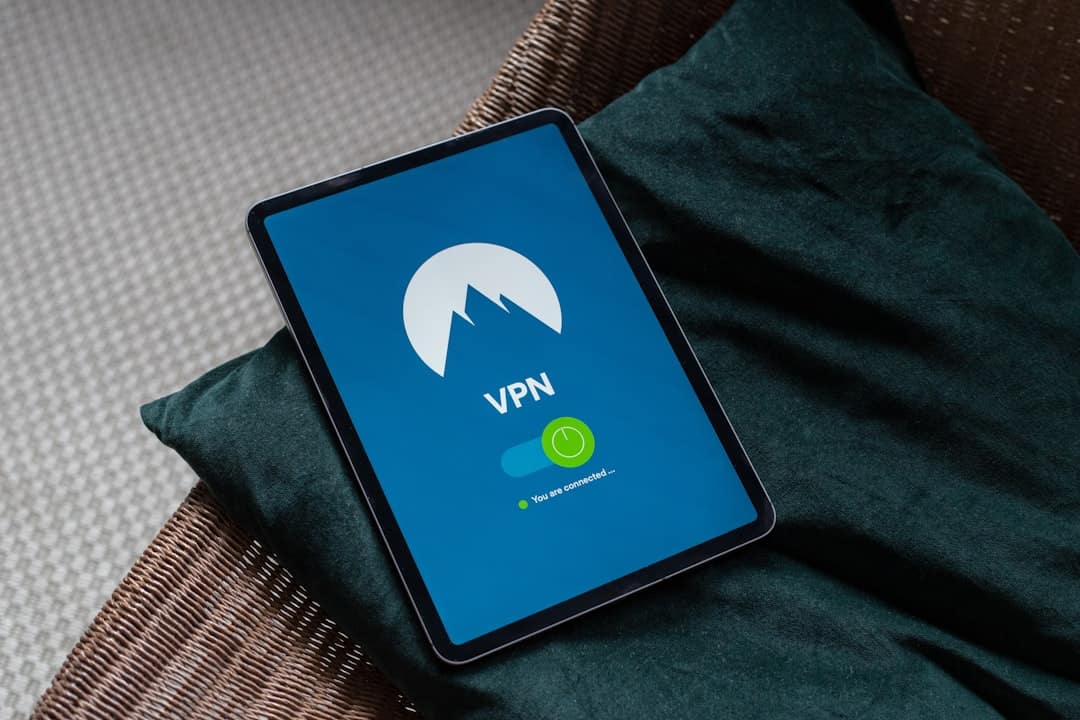Network security is a crucial component of organizational operations across all sectors and sizes. It encompasses protecting the integrity, confidentiality, and availability of an organization’s data and information systems. Without adequate network security measures, organizations face various cyber threats, including data breaches, malware attacks, and unauthorized access to sensitive information.
These threats can result in financial losses, reputational damage, and legal consequences. Therefore, recognizing the significance of network security is essential for all businesses. A primary reason for the importance of network security is the protection of sensitive data.
Organizations store vast amounts of confidential information, such as customer data, financial records, and intellectual property. Inadequate security measures put this data at risk of compromise, potentially leading to severe consequences for the organization and its stakeholders. Network security is also vital for ensuring continuous system operation and preventing disruptions that can impact productivity and profitability.
By implementing robust network security measures, organizations can mitigate cyber threat risks and maintain the integrity and availability of their data and systems. Network security is also critical for regulatory compliance. Many industries are subject to strict regulations regarding sensitive information protection, such as the Health Insurance Portability and Accountability Act (HIPAA) for healthcare organizations and the Payment Card Industry Data Security Standard (PCI DSS) for businesses handling credit card transactions.
Non-compliance with these regulations can result in severe penalties and legal consequences. Therefore, implementing strong network security measures is crucial for ensuring compliance with relevant regulations and avoiding potential liabilities. Understanding the importance of network security is vital for protecting sensitive data, maintaining operational continuity, and complying with regulatory requirements.
Key Takeaways
- Network security is crucial for protecting sensitive data and preventing unauthorized access.
- Strong password policies help to prevent unauthorized access and protect against password-related attacks.
- Firewalls and intrusion detection systems are essential for monitoring and controlling network traffic to prevent unauthorized access and attacks.
- Regularly updating and patching software helps to fix security vulnerabilities and protect against potential threats.
- Conducting regular security audits and vulnerability assessments helps to identify and address potential security weaknesses and threats.
- Educating employees on security best practices helps to create a security-conscious culture and prevent human error-related security breaches.
- Backing up data and having a disaster recovery plan are essential for ensuring business continuity in the event of a security breach or data loss.
Implementing Strong Password Policies
Implementing strong password policies is a fundamental aspect of network security. Passwords are the first line of defense against unauthorized access to systems and data, making them a critical component of any organization’s security strategy. Weak or easily guessable passwords can leave systems vulnerable to exploitation by cybercriminals, leading to potential data breaches and other security incidents.
Therefore, organizations must establish and enforce strong password policies to enhance their overall network security posture. One essential aspect of strong password policies is the use of complex and unique passwords. Employees should be required to create passwords that are at least eight characters long and include a combination of uppercase and lowercase letters, numbers, and special characters.
Additionally, employees should be discouraged from using easily guessable passwords, such as “password123” or “123456,” which are commonly targeted by cybercriminals. Furthermore, organizations should implement password expiration policies to ensure that employees regularly update their passwords and reduce the risk of unauthorized access. Another critical element of strong password policies is the implementation of multi-factor authentication (MFA).
MFA adds an extra layer of security by requiring users to provide multiple forms of verification before accessing systems or data. This typically involves something the user knows (such as a password), something they have (such as a mobile device), or something they are (such as a fingerprint or facial recognition). By implementing MFA, organizations can significantly reduce the risk of unauthorized access, even if passwords are compromised.
In conclusion, implementing strong password policies is essential for enhancing network security. By requiring employees to use complex and unique passwords and implementing multi-factor authentication, organizations can significantly reduce the risk of unauthorized access and enhance their overall security posture.
Utilizing Firewalls and Intrusion Detection Systems

Utilizing firewalls and intrusion detection systems (IDS) is crucial for protecting organizational networks from unauthorized access and malicious activities. Firewalls act as a barrier between a trusted internal network and untrusted external networks, such as the internet. They monitor and control incoming and outgoing network traffic based on predetermined security rules, effectively acting as a gatekeeper to prevent unauthorized access and potential cyber threats.
In addition to firewalls, organizations should also implement intrusion detection systems to monitor network traffic for suspicious activities or potential security breaches. IDS analyze network traffic patterns and identify any anomalies that may indicate a security threat, such as unauthorized access attempts or unusual data transfer patterns. By detecting these anomalies in real-time, IDS can alert security personnel to potential security incidents and enable them to take immediate action to mitigate the threat.
Furthermore, organizations can benefit from the use of intrusion prevention systems (IPS), which are designed to not only detect but also actively prevent potential security threats. IPS can automatically respond to detected threats by blocking malicious traffic or taking other proactive measures to protect the network from exploitation. Overall, utilizing firewalls and intrusion detection systems is essential for protecting organizational networks from unauthorized access and potential security threats.
By implementing these technologies, organizations can establish a robust defense against cyber threats and enhance their overall network security posture.
Regularly Updating and Patching Software
| Software | Frequency of Updates | Patching Process |
|---|---|---|
| Operating System | Monthly | Automatic updates or manual installation |
| Antivirus Software | Real-time or daily | Automatic updates or manual installation |
| Web Browsers | Weekly | Automatic updates or manual installation |
Regularly updating and patching software is a critical aspect of network security. Software updates and patches are released by vendors to address known vulnerabilities and security flaws in their products. Failure to apply these updates in a timely manner can leave systems vulnerable to exploitation by cybercriminals, potentially leading to data breaches, malware infections, and other security incidents.
Therefore, organizations must prioritize the regular updating and patching of their software to maintain a secure network environment. One of the primary reasons why regular software updates are essential for network security is the mitigation of known vulnerabilities. Cybercriminals often exploit known vulnerabilities in software to gain unauthorized access to systems or launch attacks such as ransomware or data theft.
By applying software updates and patches promptly, organizations can address these vulnerabilities and reduce the risk of exploitation by malicious actors. Furthermore, regular software updates are essential for ensuring compliance with industry regulations and standards. Many regulatory frameworks require organizations to maintain up-to-date software with the latest security patches to protect sensitive information effectively.
Failure to comply with these requirements can result in severe penalties and legal consequences. In conclusion, regularly updating and patching software is crucial for maintaining a secure network environment. By addressing known vulnerabilities and ensuring compliance with industry regulations, organizations can minimize the risk of cyber threats and enhance their overall network security posture.
Conducting Regular Security Audits and Vulnerability Assessments
Conducting regular security audits and vulnerability assessments is essential for identifying potential weaknesses in an organization’s network security posture. Security audits involve a comprehensive review of an organization’s security policies, procedures, and controls to assess their effectiveness in protecting against potential threats. Vulnerability assessments, on the other hand, involve identifying and prioritizing vulnerabilities in an organization’s systems and applications that could be exploited by cybercriminals.
One of the primary benefits of conducting regular security audits is the identification of gaps in an organization’s security controls. By reviewing existing policies and procedures, organizations can identify areas where improvements are needed to enhance their overall security posture. Additionally, security audits can help organizations ensure compliance with industry regulations and standards by identifying any deficiencies that need to be addressed.
Similarly, vulnerability assessments play a crucial role in identifying potential weaknesses in an organization’s systems and applications that could be exploited by cybercriminals. By conducting regular vulnerability assessments, organizations can proactively identify and address vulnerabilities before they are exploited by malicious actors. This proactive approach can significantly reduce the risk of potential security incidents and data breaches.
In conclusion, conducting regular security audits and vulnerability assessments is essential for identifying potential weaknesses in an organization’s network security posture. By proactively identifying gaps in security controls and addressing vulnerabilities, organizations can enhance their overall security posture and minimize the risk of cyber threats.
Educating Employees on Security Best Practices

Educating employees on security best practices is crucial for enhancing an organization’s overall network security posture. Employees are often the first line of defense against potential cyber threats, making their awareness and understanding of security best practices essential for protecting organizational systems and data. One fundamental aspect of employee education is raising awareness about common cyber threats and how they can be mitigated.
Employees should be educated about the risks associated with phishing attacks, malware infections, social engineering tactics, and other common cyber threats. By understanding these risks, employees can be more vigilant in identifying potential threats and taking appropriate action to mitigate them. Furthermore, employees should be trained on how to create strong passwords, recognize suspicious emails or links, and report potential security incidents promptly.
By empowering employees with the knowledge and skills to identify and respond to potential threats effectively, organizations can significantly enhance their overall network security posture. In addition to raising awareness about common cyber threats, employee education should also cover best practices for securely handling sensitive information, accessing organizational systems remotely, and using personal devices for work-related activities. By educating employees on these best practices, organizations can minimize the risk of potential security incidents resulting from human error or negligence.
In conclusion, educating employees on security best practices is essential for enhancing an organization’s overall network security posture. By raising awareness about common cyber threats and empowering employees with the knowledge and skills to mitigate these risks effectively, organizations can establish a robust defense against potential security incidents.
Backing Up Data and Having a Disaster Recovery Plan
Backing up data regularly and having a disaster recovery plan in place is crucial for ensuring business continuity in the event of a security incident or unexpected event that impacts organizational systems or data. Data backups involve creating copies of critical information that can be used to restore systems in the event of data loss or corruption due to cyber threats or other unforeseen circumstances. One primary benefit of regular data backups is the ability to recover from potential data loss or corruption effectively.
By maintaining up-to-date backups of critical information, organizations can minimize the impact of potential data breaches or system failures on their operations. Additionally, having a disaster recovery plan in place ensures that organizations have a structured approach to recovering from potential security incidents or unexpected events that impact their systems or data. Furthermore, data backups are essential for protecting against ransomware attacks that encrypt critical information and demand payment for its release.
By maintaining regular backups of critical information, organizations can restore their systems without having to pay ransom demands from cybercriminals. In addition to regular data backups, having a disaster recovery plan in place ensures that organizations have a structured approach to recovering from potential security incidents or unexpected events that impact their systems or data. A well-defined disaster recovery plan outlines the steps that need to be taken to restore systems and operations in the event of a security incident or unexpected event effectively.
In conclusion, backing up data regularly and having a disaster recovery plan in place is crucial for ensuring business continuity in the event of a security incident or unexpected event that impacts organizational systems or data. By maintaining up-to-date backups of critical information and having a structured approach to recovering from potential security incidents or unexpected events, organizations can minimize the impact on their operations and maintain business continuity effectively.
If you’re interested in exploring the potential impact of blockchain technology on network security, you should check out this article on Blockchain Technology. It delves into the ways in which blockchain can enhance security measures within networks and protect against cyber threats.
FAQs
What is network security?
Network security refers to the measures and practices put in place to protect a network and the data it carries from unauthorized access, misuse, or modification.
Why is network security important?
Network security is important because it helps to safeguard sensitive information, prevent unauthorized access, and protect against cyber threats such as malware, ransomware, and hacking.
What are some common network security threats?
Common network security threats include malware, phishing attacks, denial of service (DoS) attacks, ransomware, and insider threats.
What are some common network security measures?
Common network security measures include firewalls, antivirus software, intrusion detection systems, encryption, access control, and regular security audits.
What is the role of encryption in network security?
Encryption is used to protect data as it is transmitted over a network, making it unreadable to anyone who does not have the proper decryption key.
What is the difference between a firewall and an antivirus software?
A firewall is a network security device that monitors and controls incoming and outgoing network traffic, while antivirus software is designed to detect and remove malware from a computer or network.
What is the best practice for securing a wireless network?
Best practices for securing a wireless network include using strong encryption, changing default passwords, disabling remote management, and regularly updating firmware and security settings.











Leave a Reply